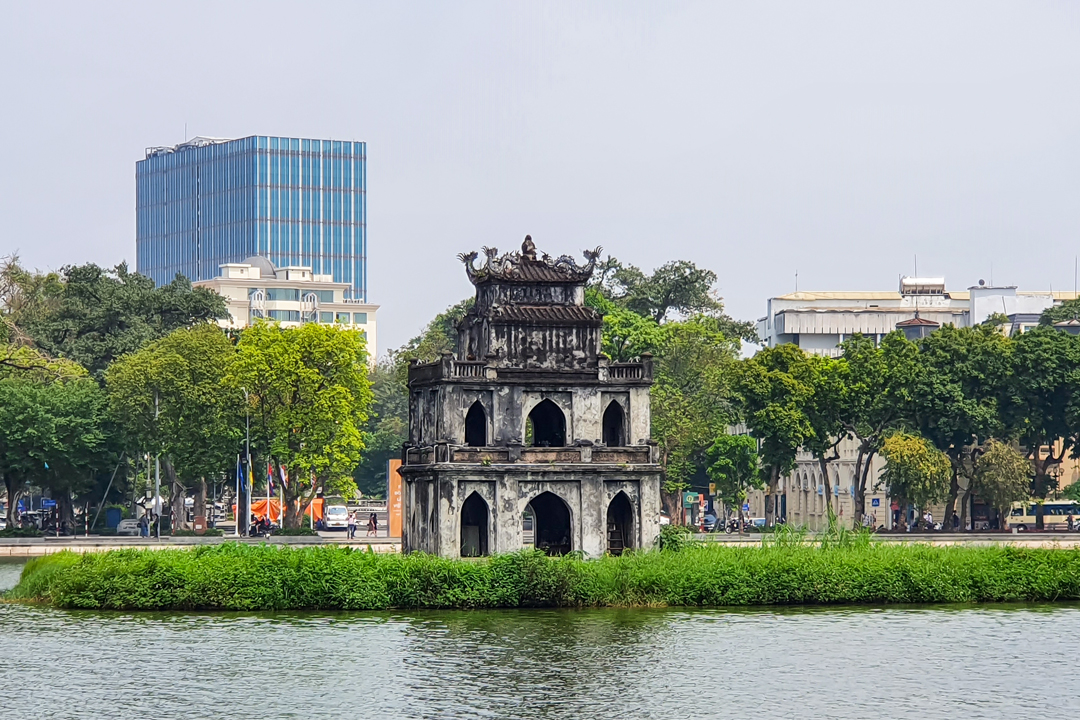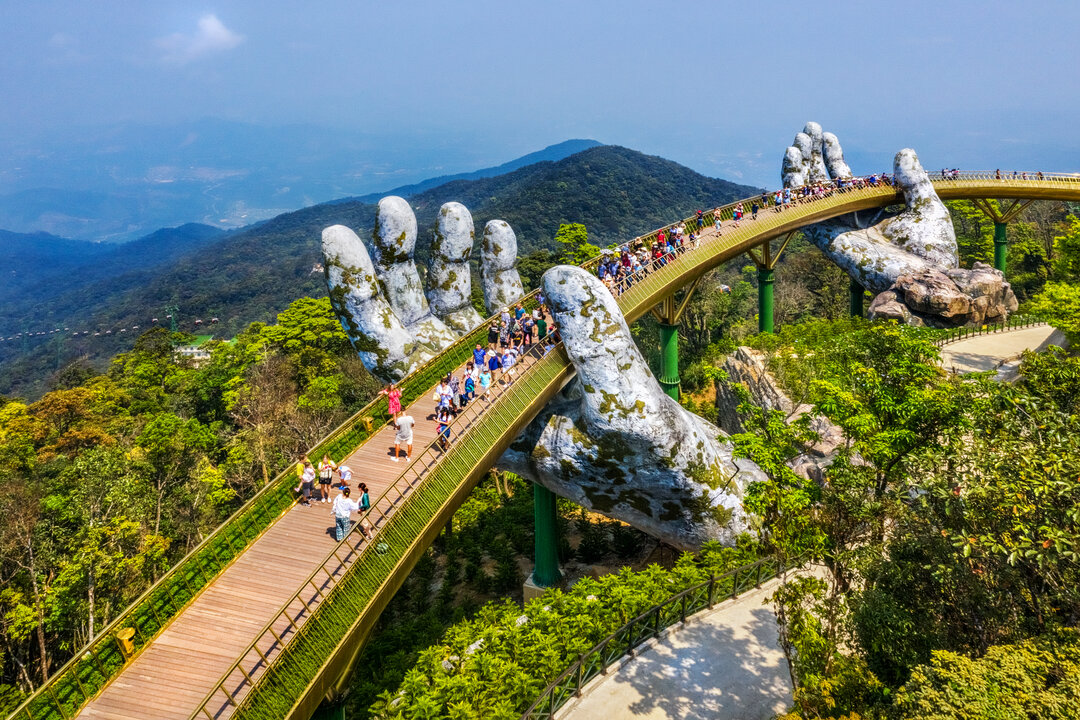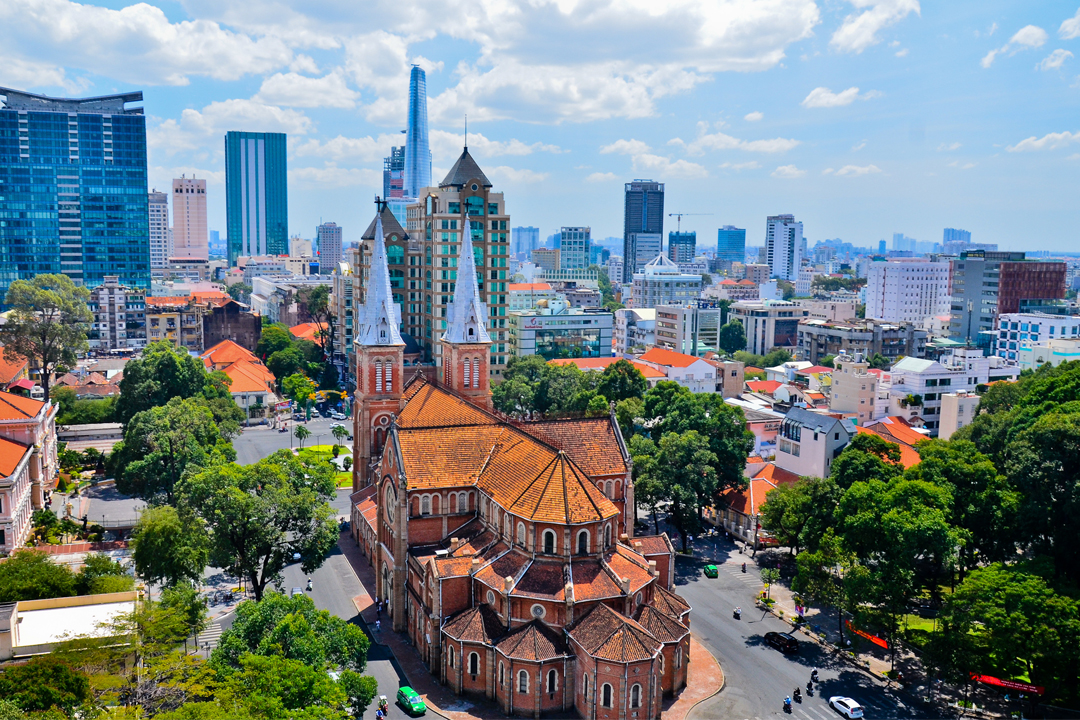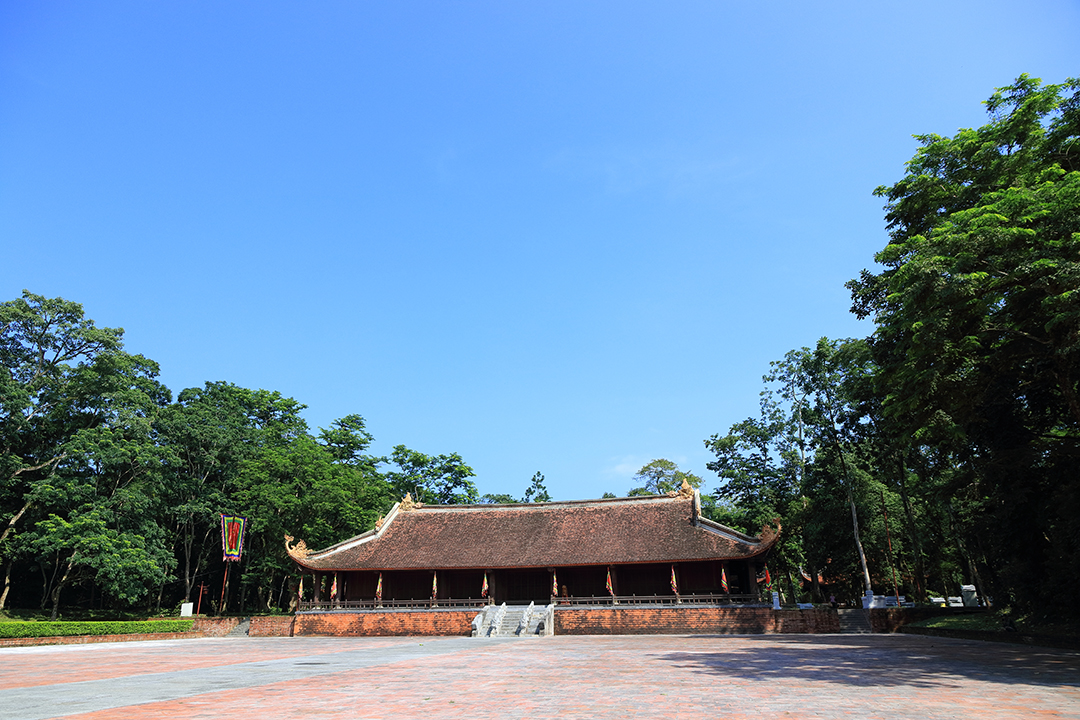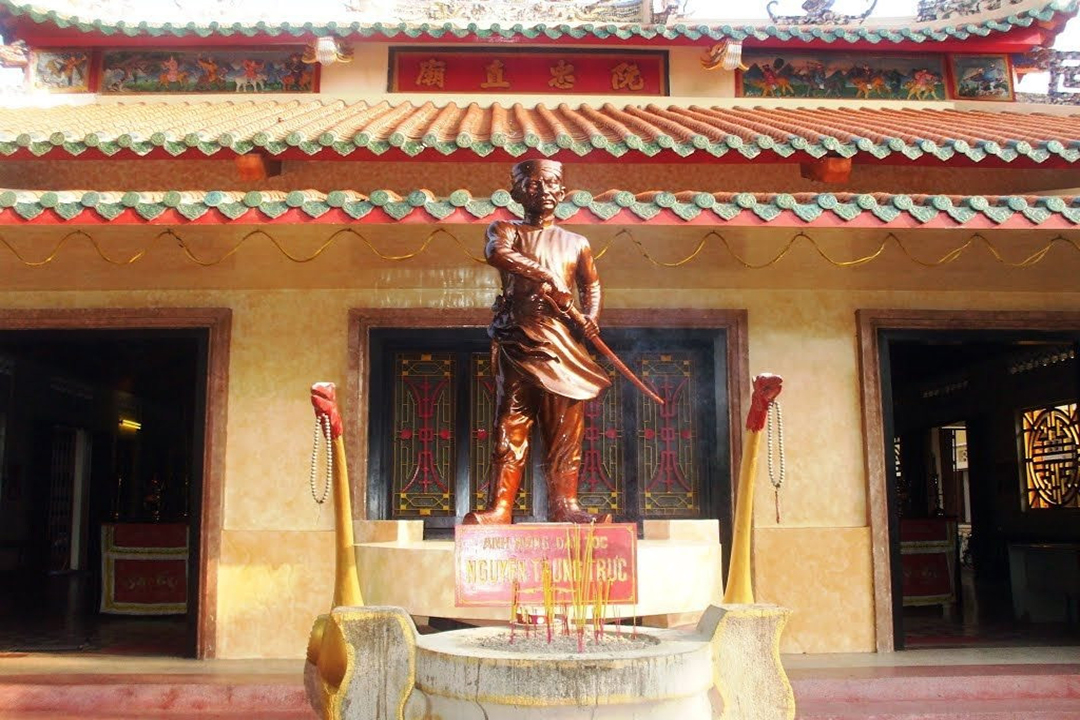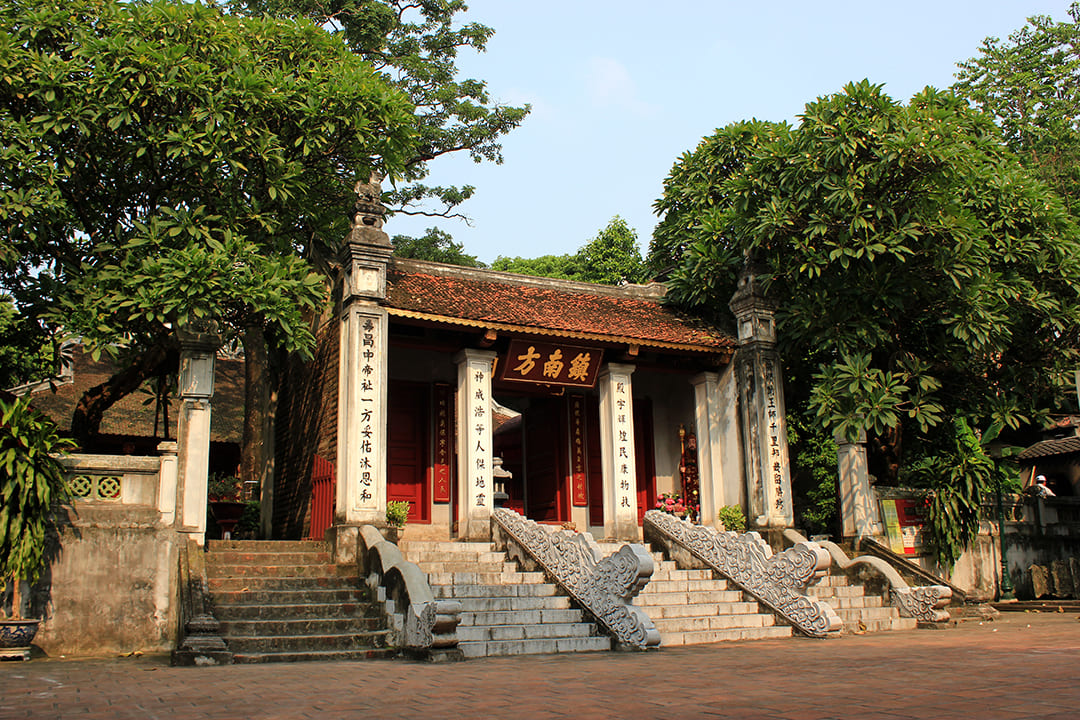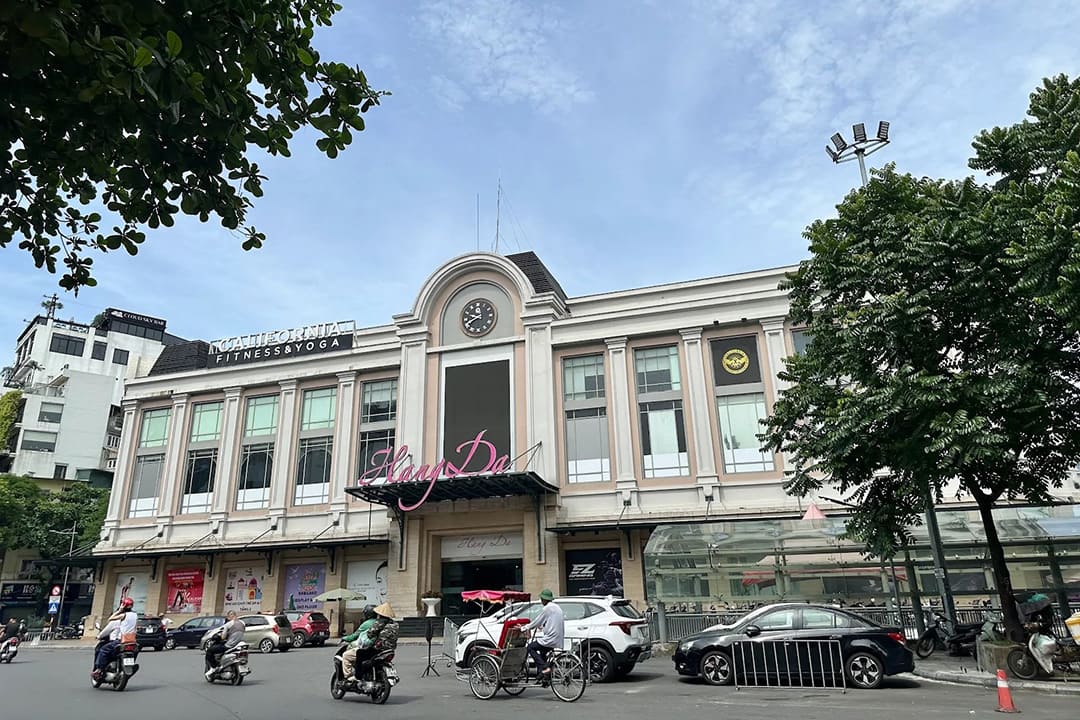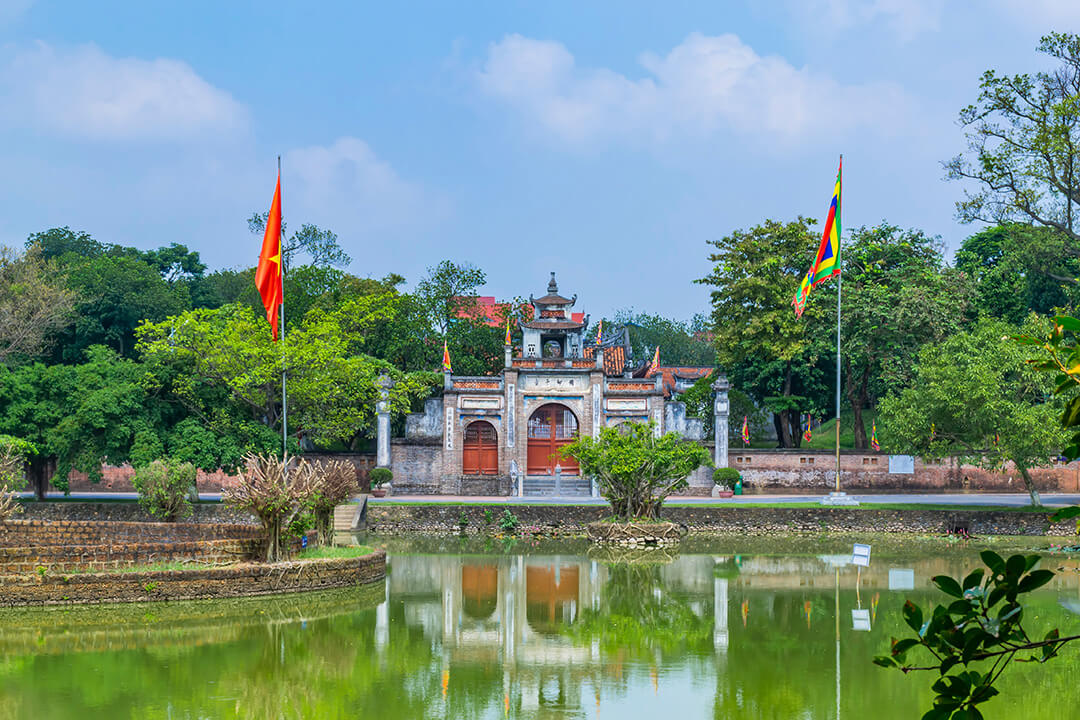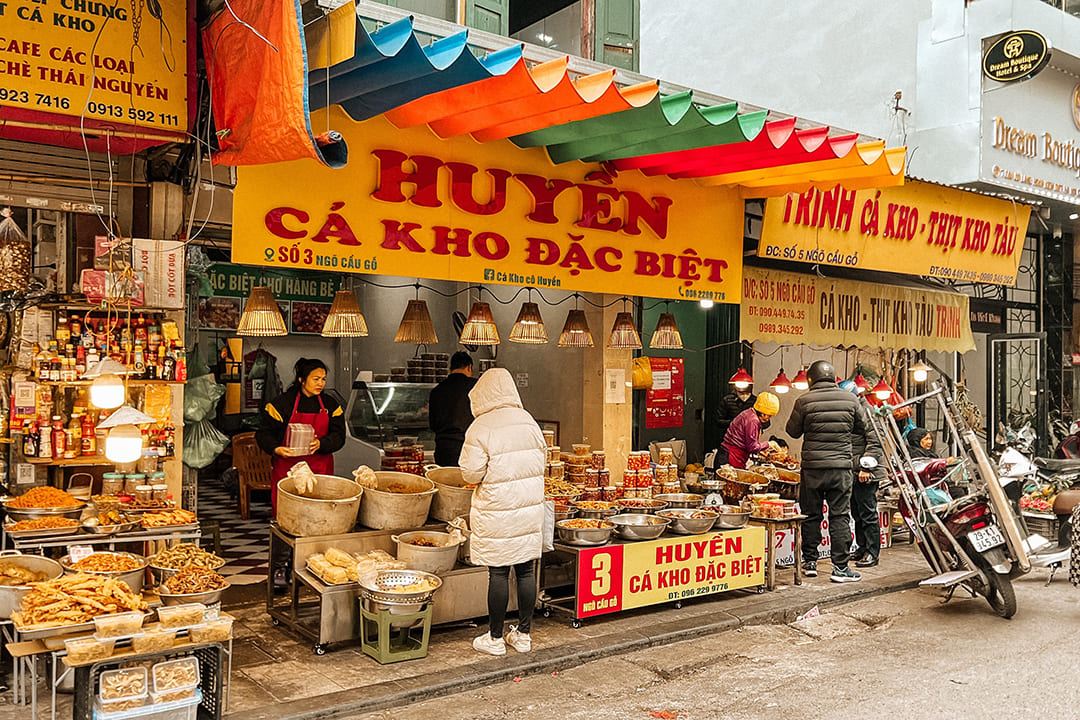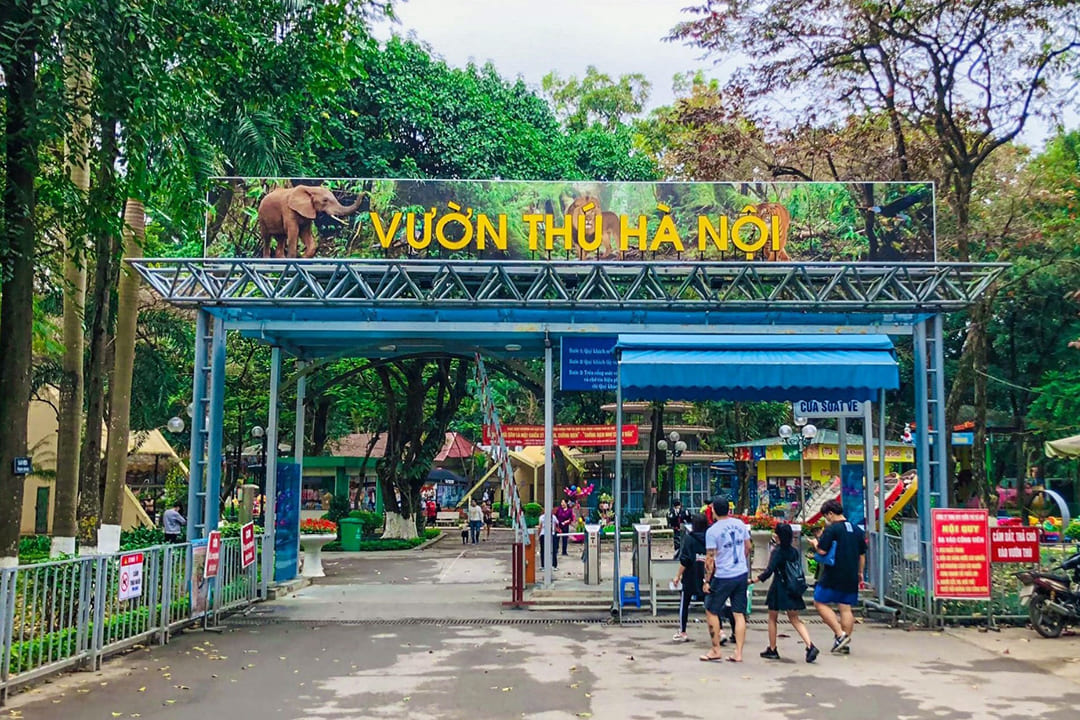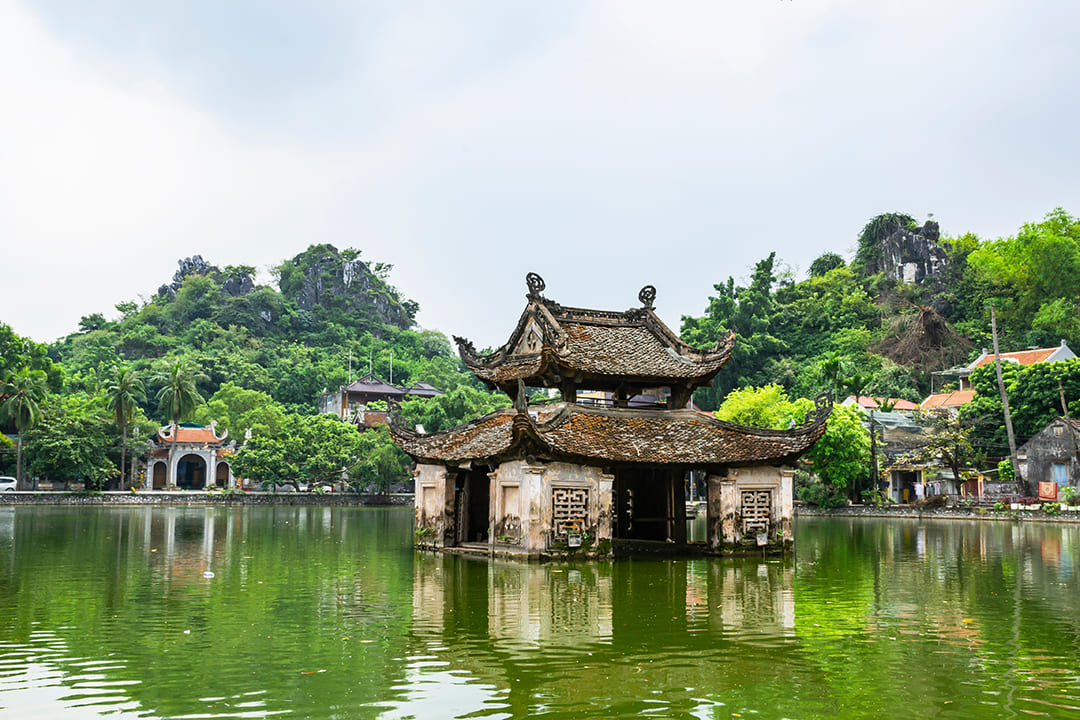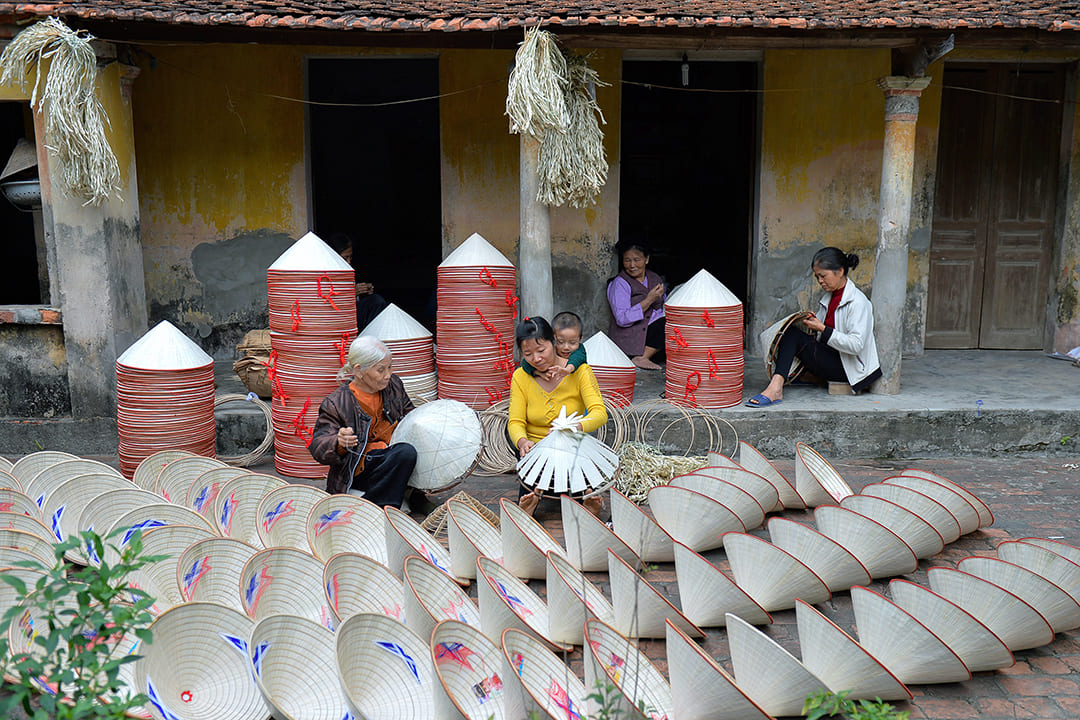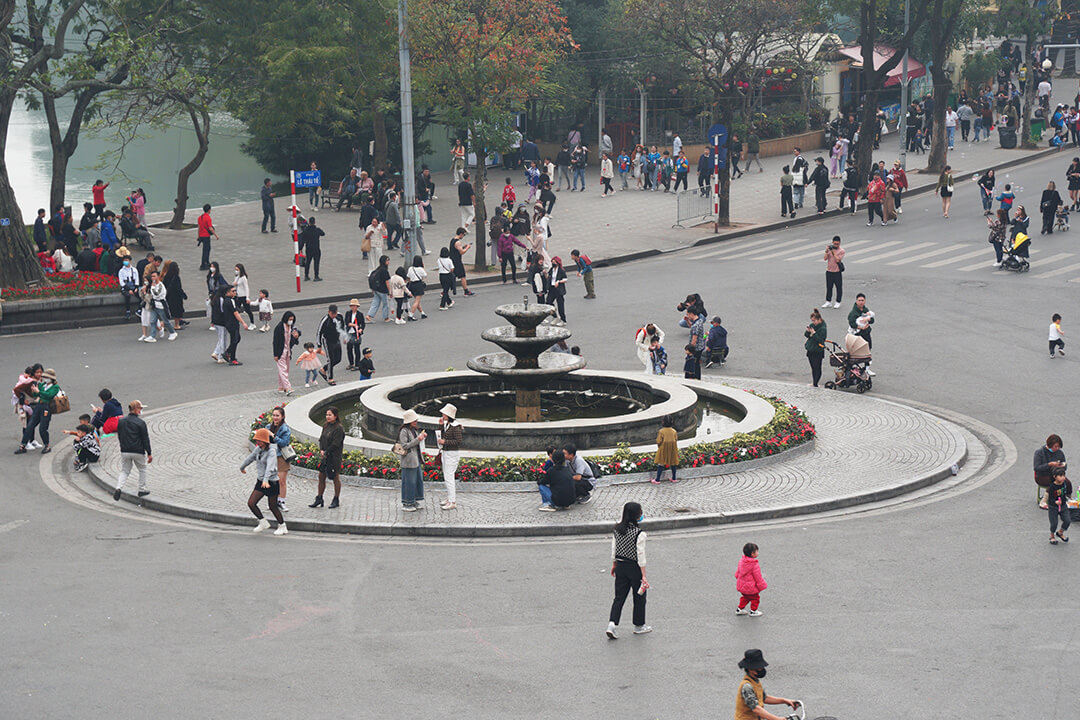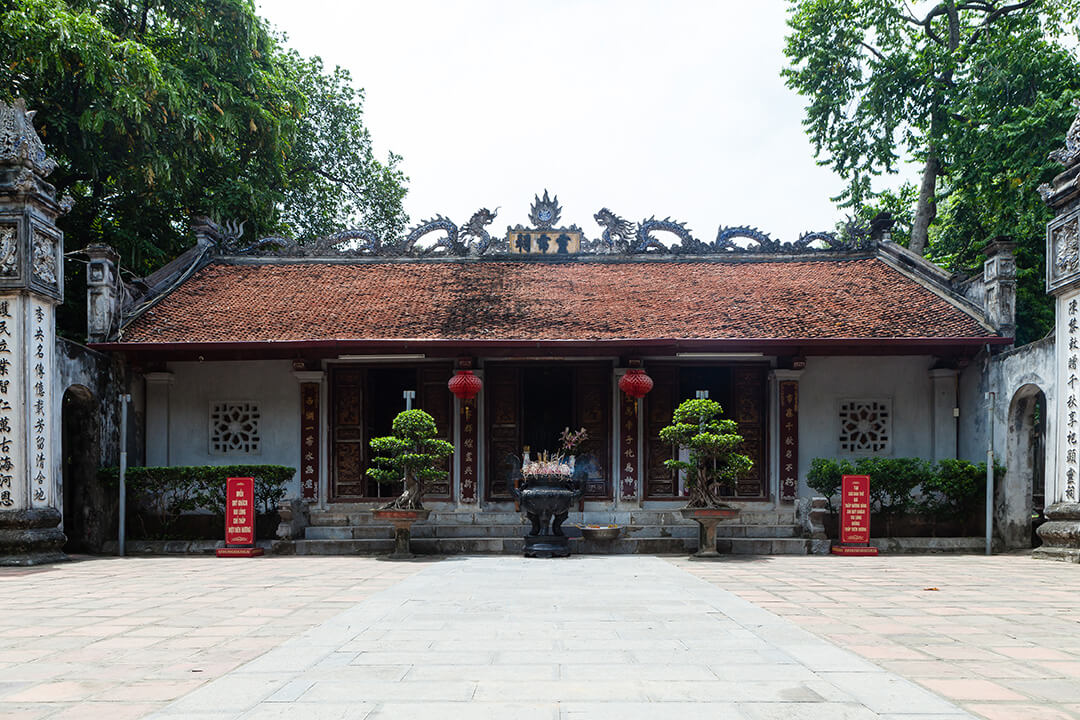Oct - 06 - 2025
Hanoi Flag Tower, also known as Cot Co Ha Noi, is one of the most revered and recognisable landmarks in Vietnam. Standing proudly against the city skyline, this stoic structure is more than just a historical monument, the flag tower is a powerful symbol of Hanoi’s unyielding spirit and national pride. For nearly two centuries, it has witnessed the capital's turbulent history, surviving wars and transformations to become an enduring icon of independence. History buffs, photographers, and curious travelers alike shouldn’t miss Cot Co Ha Noi to grasp the city’s soul. As your trusted local experts, GTrip has created the definitive guide to help you explore every facet of this magnificent tower, from its location and history to the breathtaking views from its summit.
Overview of Hanoi Flag Tower
- Location: 28A Dien Bien Phu Street, Ba Dinh Ward (formerly Dien Bien Ward, Ba Dinh District), Hanoi
- Opening hours: 8:00 AM - 5:00 PM
- Admission: Latest update from 01/01/2025
- Adults: 100,000 VND/person/tour (~$4)
- Vietnamese students (16 years old and above) and seniors (60 years old and above): 50,000 VND/person/tour
- Children under 16 years old and people of meritorious service to the country: Free of charge
(Note: Student cards and identity cards must be presented upon purchase of tickets)
The Hanoi Flag Tower is located within the Thang Long Imperial City. It is one of the most historic and symbolic landmarks in Hanoi, originally built between 1805 and 1812 during the Nguyen Dynasty as part of the Hanoi Citadel. The tower stands 33.4 meters tall, reaching a total height of 41 meters including the flagpole, making it a prominent symbol of the city. It was once used as a military observation post and, remarkably, was never destroyed during the French invasion, remaining an intact relic of the ancient citadel.
From the top of the tower, visitors can enjoy panoramic views of many significant sites in Hanoi, including parts of the Thang Long Imperial Citadel, the Hanoi Post Office, Hoan Kiem Lake, Ba Dinh Square, the Ho Chi Minh Mausoleum, and other historic landmarks. As a symbol of Hanoi and Vietnam’s heroic past, the Flag Tower is especially remembered as the site where the national flag was first raised after the 1945 Revolution.
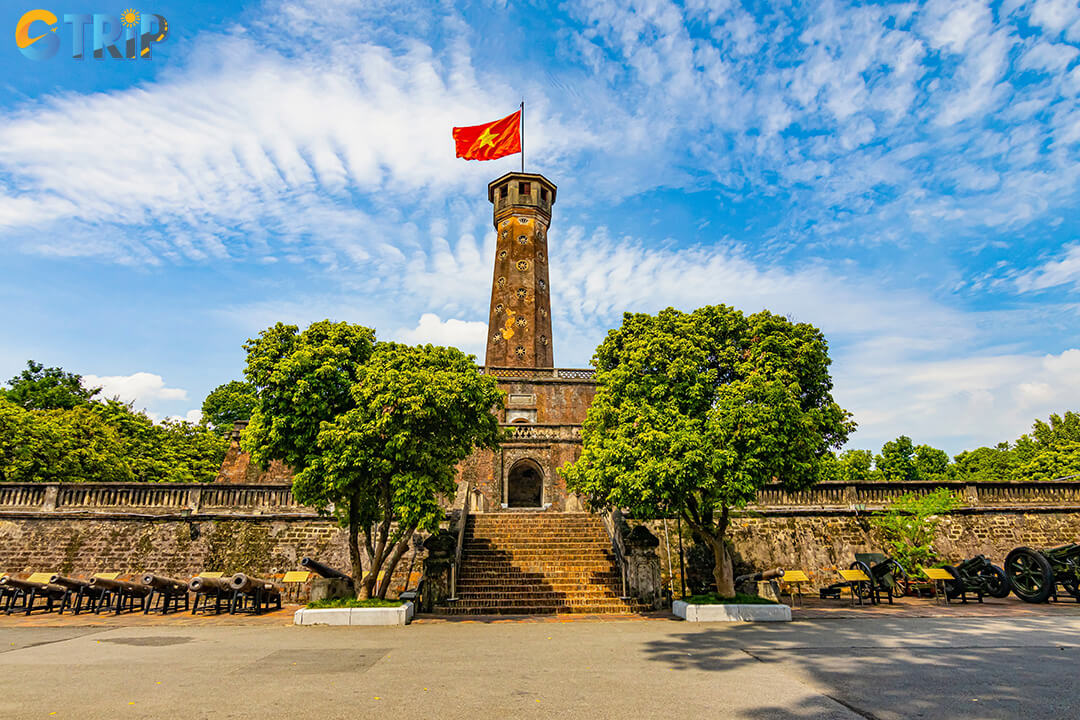
A proud symbol of Hanoi’s resilience, the historic Flag Tower rises 41 meters above the city, offering sweeping views and a direct link to Vietnam’s heroic past
How to get to Hanoi Flag Tower
Thanks to its central location in the Ba Dinh area, reaching the Hanoi Flag Tower is incredibly easy from anywhere in the city. Here’s a breakdown of the best ways to get there.
By public bus - Public transport in Hanoi
Hopping on a local bus is a fantastic and highly affordable way to reach the Flag Tower. Several bus routes travel along the major artery of Dien Bien Phu Street, with stops located just moments from the site. Keep an eye out for these bus numbers: 02, 09ACT, 18, 22A, 32, 34, 45, and 159. The "Cot Co Ha Noi - Dien Bien Phu" bus stop is just a one-minute walk away, making it one of the most convenient options. Using public transport in Hanoi is a great local experience.
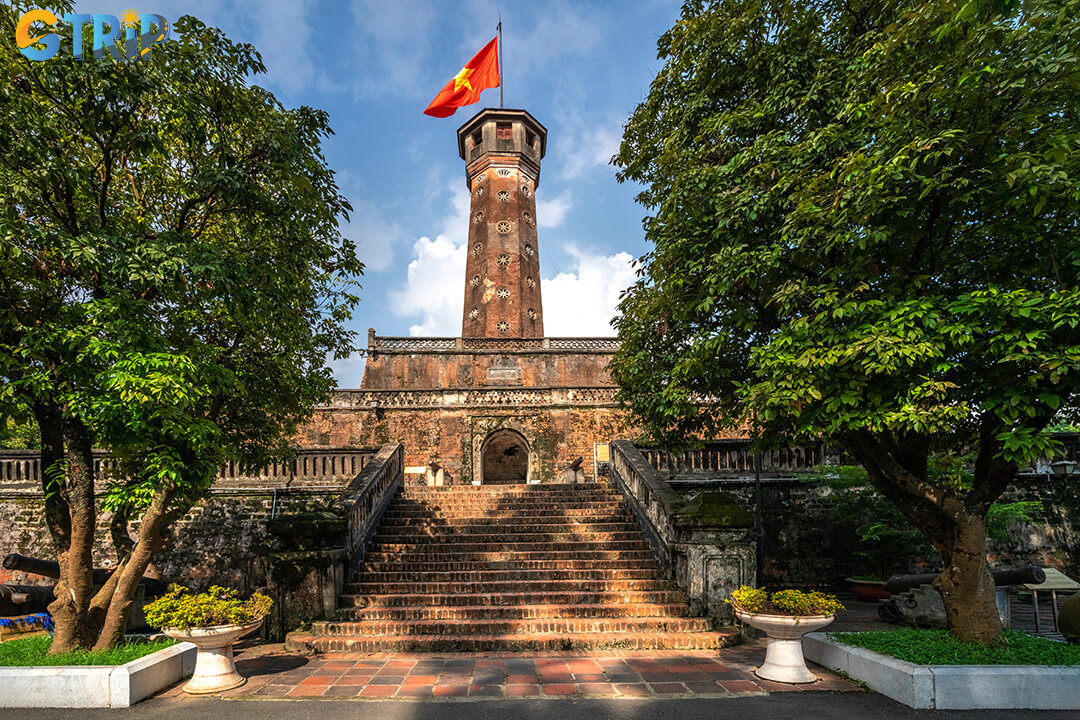
Catching a local bus is the cheapest and most convenient way to reach the Hanoi Flag Tower, with multiple routes stopping just a minute’s walk away
By taxi or ride - Hailing service
For a direct, comfortable, and hassle - free journey, taxis and ride - hailing apps like Grab are your best friends in Hanoi. These services are abundant and easy to use. Simply enter "Hanoi Flag Tower" or its address, "28A Dien Bien Phu", into the app. This is an excellent choice if you're traveling with a group, have limited time, or are coming from a part of the city not well - served by a direct bus route.
By car or motorbike
If you feel confident navigating Hanoi's vibrant streets on your own, driving a car or motorbike is a great way to go.
- From Hoan Kiem Lake: A popular route is to head down Trang Thi Street, continue onto Cua Nam Street, and then make your way to Dien Bien Phu Street.
- From downtown Hanoi: You can take Ton Duc Thang Street, turn right onto Le Hong Phong Street, and follow it until you reach Dien Bien Phu Street.
On foot
Exploring Hanoi on foot is one of the best ways to soak in the city's incredible atmosphere, and the Flag Tower is perfectly situated for a walking tour in Hanoi. It's located less than 1 kilometer from Hoan Kiem Lake, making for a pleasant and scenic 20-minute stroll. The tower is a short walk from the Ho Chi Minh Mausoleum and the Imperial Citadel, linking Hanoi’s top sights.
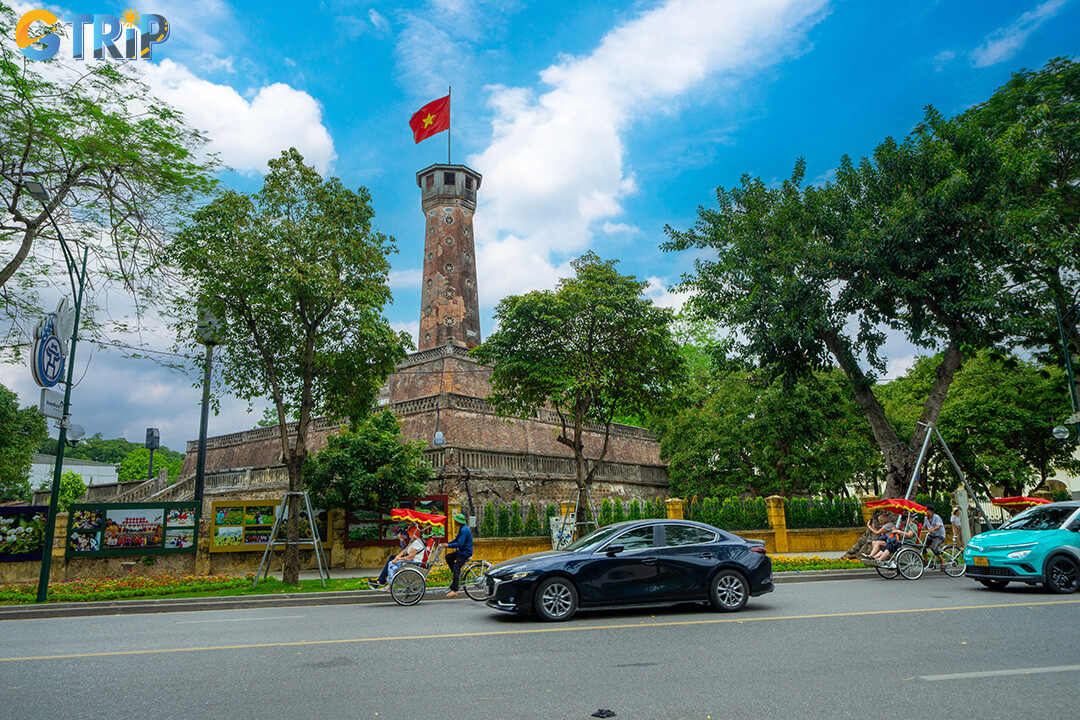
The Hanoi Flag Tower is ideally located for a walking tour, just a 20-minute stroll from Hoan Kiem Lake and steps from the city’s top landmarks
History of Hanoi Flag Tower
The Hanoi Flag Tower was constructed between 1805 and 1812 during the Nguyen Dynasty. It was erected as an observation post for the Hanoi Citadel. The structure stands as a testament to the architectural and engineering skills of that era, built on the grounds of the former Tam Mon gate of the Forbidden City during the Later Le dynasty. Its primary function was to serve as a watchtower, providing a panoramic view of the citadel and its surroundings.
Unlike many other structures in Hanoi, the Flag Tower was spared during the French colonial period (1894-1897) when numerous parts of the citadel were demolished. The French colonial forces recognized its strategic value and continued to use it as a military post and observation tower throughout their occupation. This continuous use ensured its preservation, allowing it to survive a tumultuous period in Vietnam's history while other significant historical buildings were lost.
After the end of French rule, the Vietnamese flag was first flown atop the tower on October 10, 1954, marking the liberation of the capital. For many years, the tower was located within the grounds of the Vietnam Military History Museum. It is now part of the Thang Long Imperial Citadel complex, a UNESCO World Heritage Site, located on Dien Bien Phu Street, and it remains one of Hanoi's most iconic symbols.
Architecture of Hanoi Flag Tower
More than a national symbol, the Hanoi Flag Tower captivates visitors with its solid form, intricate details, and a design that reflects both strength and elegance.
Exterior architecture
The Hanoi Flag Tower stands at 33.4 meters in height, reaching 41 meters when including the flagpole. Its base is formed by three solid tiers shaped like truncated square pyramids, stacked smaller as they rise to create a strong and majestic foundation.
- The first tier measures 42.5 meters on each side and is 3.1 meters high. Two brick staircases are built into this level, providing direct access to the structure.
- The second tier is 27 meters wide and 3.7 meters high, featuring four doors facing east, west, south, and north. Three of these doors carry inscriptions symbolizing light and hope: the east door reads “Nghenh Huc” (Welcoming dawn’s sunlight), the west door “Hoi Quang” (Reflecting light), and the south door “Huong Minh” (Directed to the sunlight). The north door, however, is left unmarked.
- The third tier measures 12.8 meters wide and 5.1 meters high, with a northern door that opens into the spiral staircase leading upward.
Above this rises a hexagonal or octagonal tower standing 18.2 meters tall. Its burnt shaped ventilation holes that bring both natural light and airflow inside. At the very top is the pavilion, shaped observatory with eight windows, covered by a tiled roof. Crowning the structure is a sturdy concrete flagpole, which holds the national flag and serves as a lightning rod.
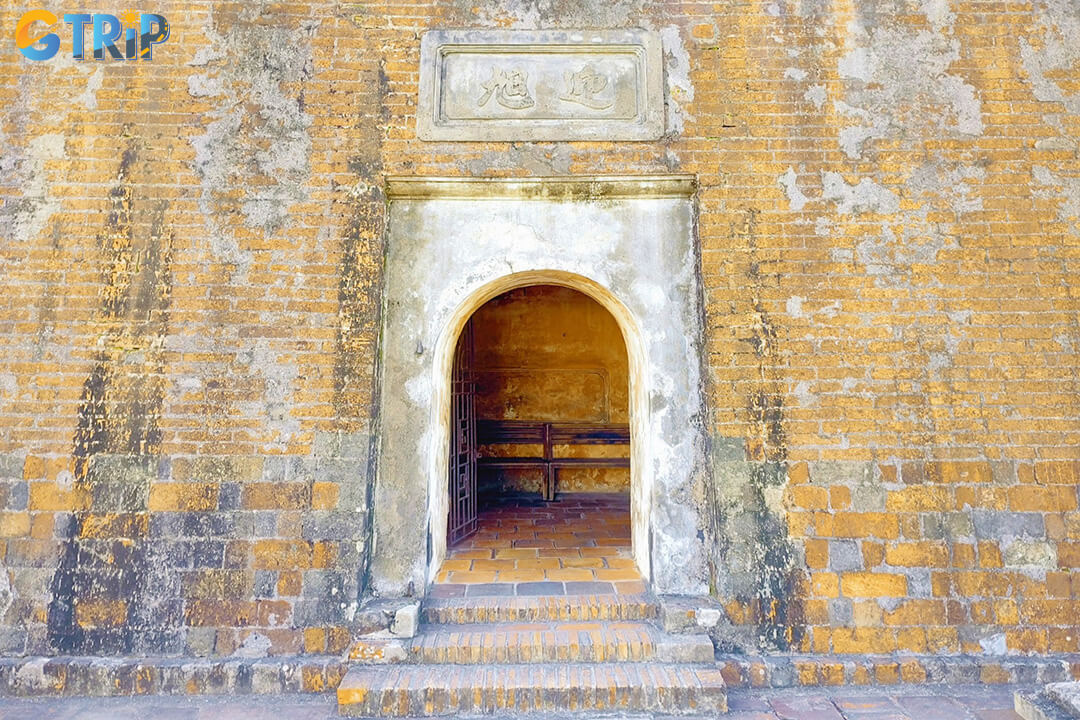
The Hanoi Flag Tower combines three solid tiers, an octagonal tower, and a pavilion observatory, creating a majestic structure crowned by Vietnam’s national flag
Interior architecture
Inside, the tower presents a climbing journey with a total of 105 steps, including a 54-step spiral staircase winding up through the tower’s core. The stairway is flanked by decorative arched doorways and floral - shaped windows that illuminate and ventilate the interior naturally, creating a cool, airy, and inviting atmosphere. Visitors ascending the tower experience a blend of functional military design and traditional artistic details, culminating in the octagonal observatory room at the top. This space embodies both the tower’s historical military purpose and its modern symbolic role as a beacon of national pride and resilience.
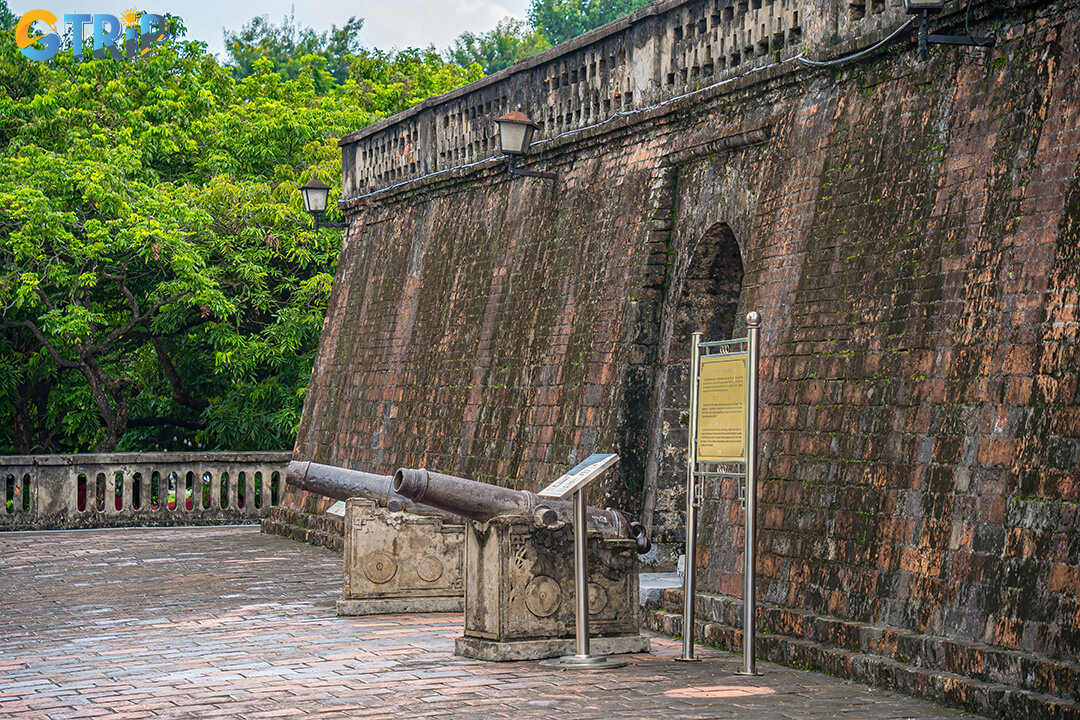
Climbing the tower’s 105 steps reveals a blend of military design and artistry, leading to an airy observatory with panoramic views of Hanoi
Things to do when visiting Hanoi Flag Tower
A visit to the Flag Tower offers more than just a history lesson, it's an interactive experience. You can climb to the top, admire its unique design, and use it as a starting point to explore Hanoi's most important historical district.
Climb the tower for panoramic views
The main highlight for many visitors is the ascent to the top. The journey up the 54 - step spiral staircase is an experience in itself, with light filtering through the uniquely shaped windows. Once you emerge onto the top platform, you're rewarded with stunning panoramic views over the former Ba Dinh area. From here, you can see the grounds of the Ho Chi Minh Mausoleum Complex, the green canopy of Lenin Park, and the bustling Dien Bien Phu Street below. It offers a unique perspective on the historical heart of Hanoi.
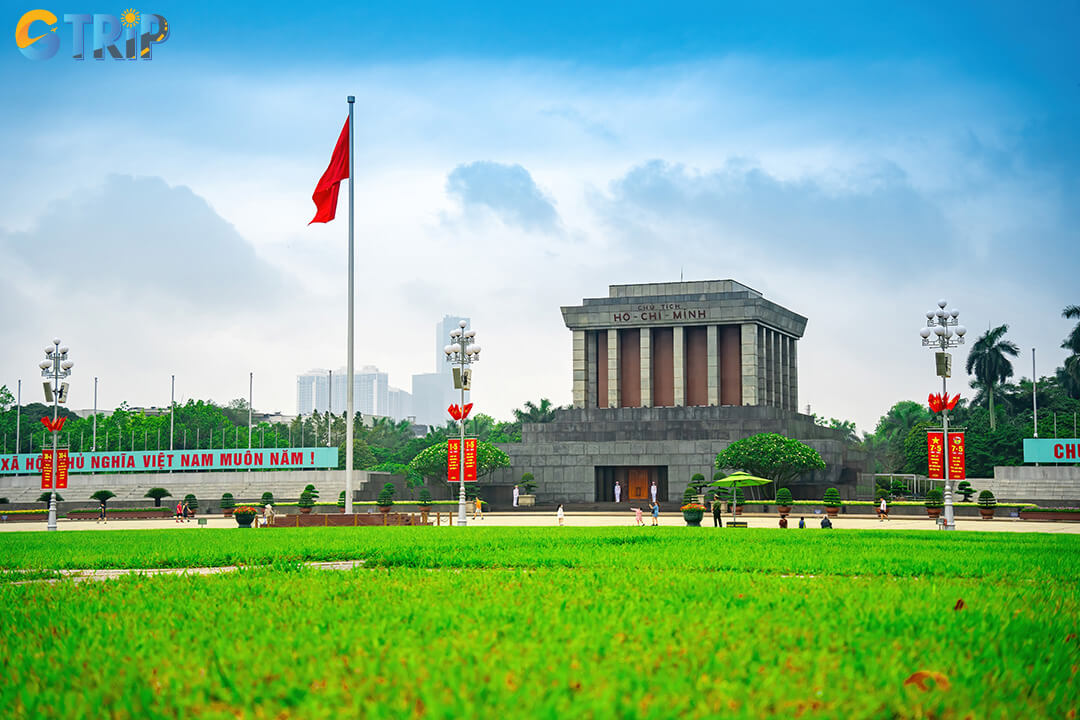
Climbing the 54-step spiral staircase leads to a panoramic view of Hanoi’s historic heart, from the Ho Chi Minh Mausoleum to Lenin Park and Dien Bien Phu Street
Admire the unique architecture
Take time to appreciate the tower’s intelligent and symbolic design. Walk around the three tiers and observe the distinct architectural features up close. Pay special attention to the inscribed characters above the eastern, southern, and western gates, which reflect the philosophical and astronomical considerations of the time. The transition from the massive square bases to the slender cylindrical column is a masterclass in 19th - century military engineering. It's a fantastic photo opportunity and a tangible connection to Vietnam's dynastic past.
Explore the surrounding area
After visiting the Hanoi Flag Tower, you can continue your journey right next door at the Imperial Citadel of Thang Long, a UNESCO World Heritage site. This historic complex offers a fascinating glimpse into Vietnam’s dynastic past, with ancient gates, archaeological remains, and exhibition halls that bring centuries of history to life. Exploring both sites together creates a seamless experience, allowing you to fully appreciate Hanoi’s rich cultural and historical legacy in one visit.
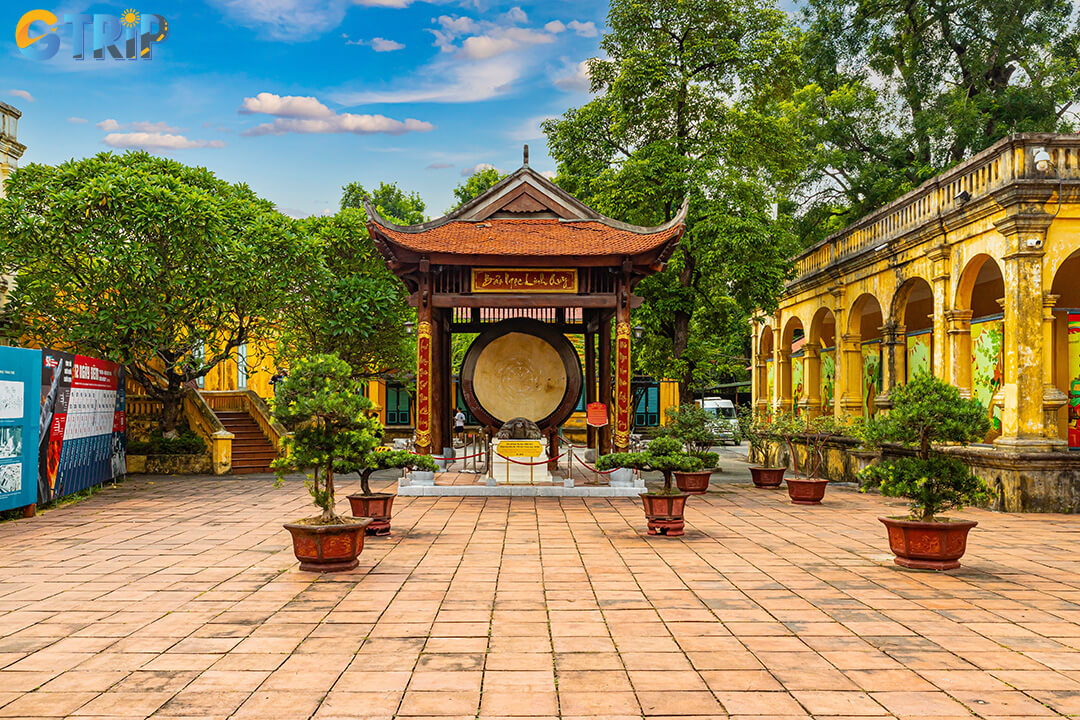
Pair your Flag Tower visit with the nearby Imperial Citadel of Thang Long for a seamless journey through Hanoi’s rich dynastic and cultural legacy
Tips for a perfect visit
To make your trip to the Hanoi Flag Tower as enjoyable as possible, keep these expert GTrip tips in mind.
Best time to visit
Hanoi's weather is most pleasant during the spring (March - April) and autumn (September - November), with milder temperatures and less humidity. To avoid the biggest crowds and the intense midday heat, plan your visit for early in the morning (right after opening at 8:00 AM) or late in the afternoon (after 3:00 PM). Visiting during these times also provides softer, more golden light, which is perfect for photography. An especially poignant time is during the daily flag-raising and lowering ceremonies, which are conducted with solemn military precision.
What to wear
Comfort is key for this visit. You'll be doing a fair amount of walking and climbing, so wear comfortable, sturdy shoes. The spiral staircase is narrow and can be steep, so footwear with good grip is recommended. While there isn't a strict dress code like at a pagoda, the Hanoi Flag Tower is a national historic and military site. To be respectful, we suggest wearing modest attire that covers your shoulders and knees. Lightweight, breathable fabrics like cotton or linen are ideal for Hanoi's climate.
Nearby attractions to explore
One of the best things about the Hanoi Flag Tower is its proximity to other world-class attractions. You can easily spend a full day exploring this historic corner of Hanoi.
The Imperial Citadel of Thang Long
The Flag Tower is just one part of the much larger Imperial Citadel of Thang Long. A short walk will take you to the main entrance of this UNESCO World Heritage Site. Here, you can explore archaeological excavation sites, ancient foundations, restored palace gates, and secret command bunkers used during the Vietnam War. It's the historical core of Hanoi, offering a profound glimpse into a thousand years of Vietnamese dynastic rule.
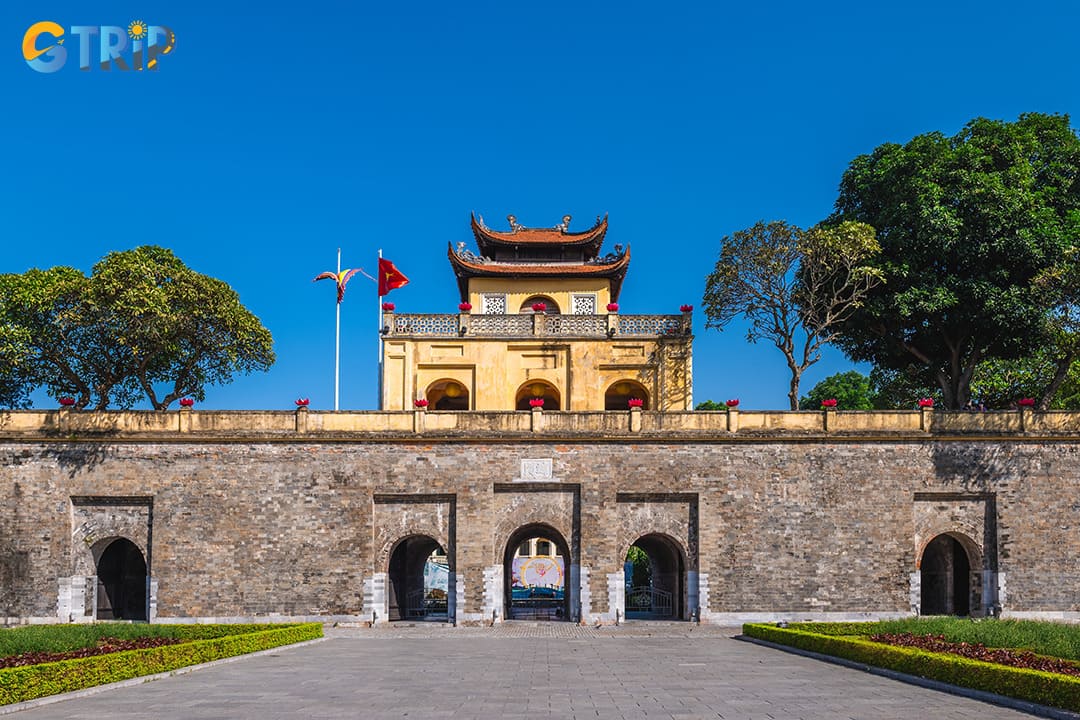
Explore the Imperial Citadel of Thang Long, a UNESCO site where Hanoi’s dynastic past and wartime history come vividly to life.
Ho Chi Minh Mausoleum Complex
A 10 - 15 minute walk from the Flag Tower will bring you to the awe-inspiring Ho Chi Minh Mausoleum Complex. This solemn area is one of the most important pilgrimage sites in Vietnam. Here, you can visit the Mausoleum itself (where the preserved body of Ho Chi Minh rests), his traditional stilt house, the Presidential Palace, and the Ho Chi Minh Museum. It's a deeply moving experience that provides insight into the life of Vietnam's revolutionary leader.
Lenin Park
Lenin Park in Hanoi is a peaceful green space covering about 17,000 square meters right in the heart of the city. The park features a wide triangular layout from which visitors can enjoy fresh air and lush greenery, making it a favorite spot for relaxation and outdoor exercise. The park's architecture includes beautiful flower gardens and a striking bronze statue of Lenin standing 5.2 meters tall, serving as a historical and cultural landmark. With no entrance fee, Lenin Park welcomes locals and tourists alike, offering facilities for jogging, cycling, badminton, yoga, and a popular leisure site for children and families.
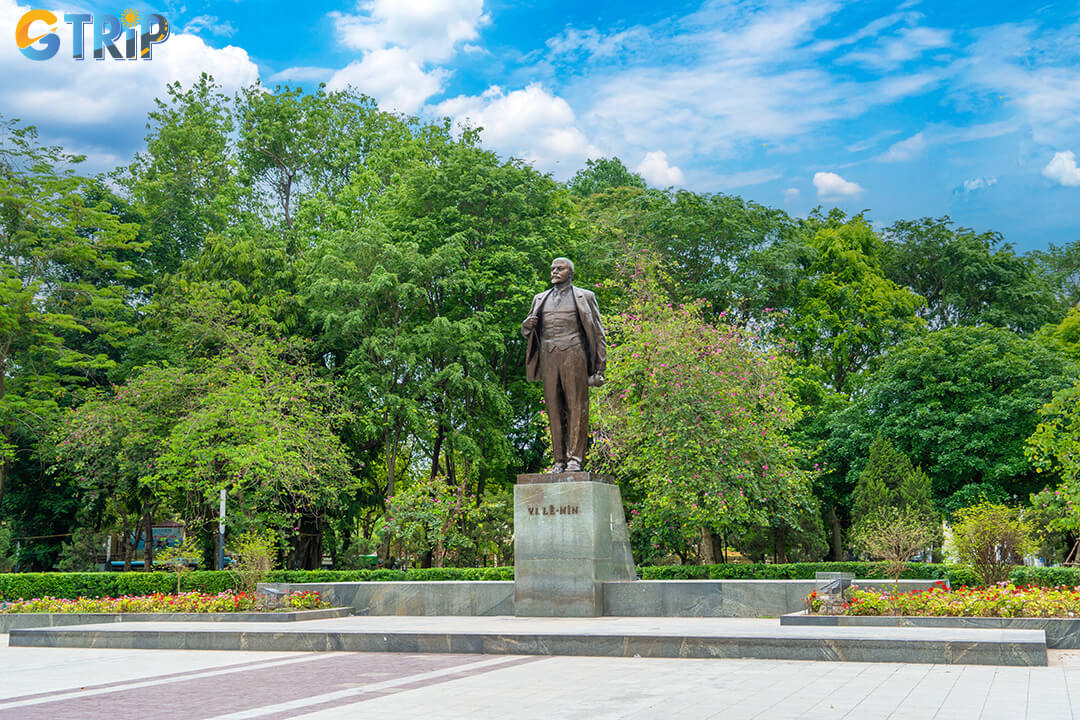
Lenin Park is a central green oasis where locals and visitors enjoy fresh air, outdoor activities, and a glimpse of history under the towering bronze statue of Lenin
Frequently asked questions (FAQ)
Before planning your visit, here are some frequently asked questions about the Hanoi Flag Tower. This handy guide covers everything from climbing to the top of a tower to photography tips and cultural etiquette, ensuring you’re well-prepared for your visit.
1. Is climbing the Hanoi Flag Tower difficult?
The climb is moderately challenging. It involves ascending a narrow spiral staircase of 54 steps. While manageable for most people with average fitness, it can be difficult for those with mobility issues, claustrophobia, or a fear of heights. Take your time, and the rewarding view will be worth it.
2. Can I use a camera inside the Hanoi Flag Tower?
Yes, photography and videography are generally permitted both at the base and at the top of the tower. However, be mindful of other visitors in the narrow staircase and on the small viewing platform. Using a large tripod might be difficult and disruptive.
3. Is the Hanoi Flag Tower suitable for children?
The site can be exciting for older children who enjoy history and a good climb. However, parents should exercise caution. The spiral staircase is steep and narrow, so close supervision is essential. It may not be suitable for very young children or toddlers who could struggle with the stairs.
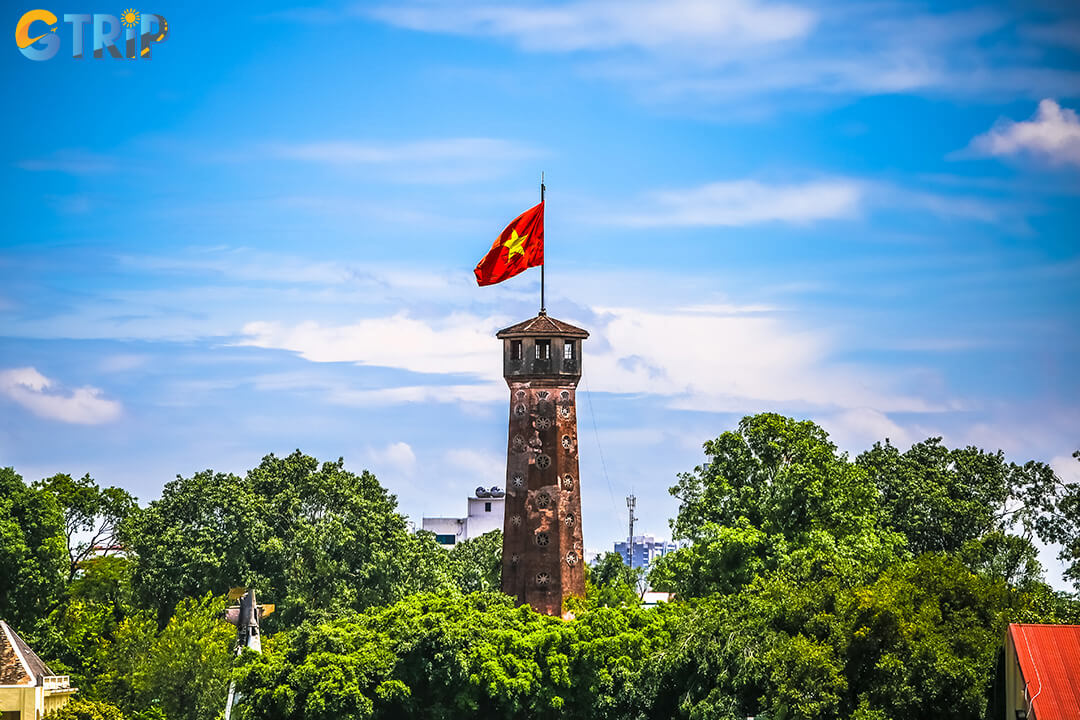
The tower is fun for older kids, but the steep spiral stairs require close parental supervision
4. What is the significance of the Vietnamese flag on the tower?
The large Vietnamese national flag (the "red flag with a yellow star") flying from the top is a profound symbol of national sovereignty, independence, and unity. For Hanoians and Vietnamese people, seeing the flag flying from this historic tower, which has survived so many conflicts, represents the resilience and unconquerable spirit of the nation.
5. Is the Hanoi Flag Tower a UNESCO World Heritage site?
The Flag Tower is a key component of the Central Sector of the Imperial Citadel of Thang Long. Which was officially recognized as a UNESCO World Heritage site in 2010 for its immense historical and cultural significance.
6. Is there a dress code for the Hanoi Flag Tower?
While there isn't a strictly enforced dress code, we at GTrip always recommend respectful attire when visiting historical and cultural sites. Wearing clothes that cover your shoulders and knees is a good practice. Most importantly, wear comfortable shoes for the climb.
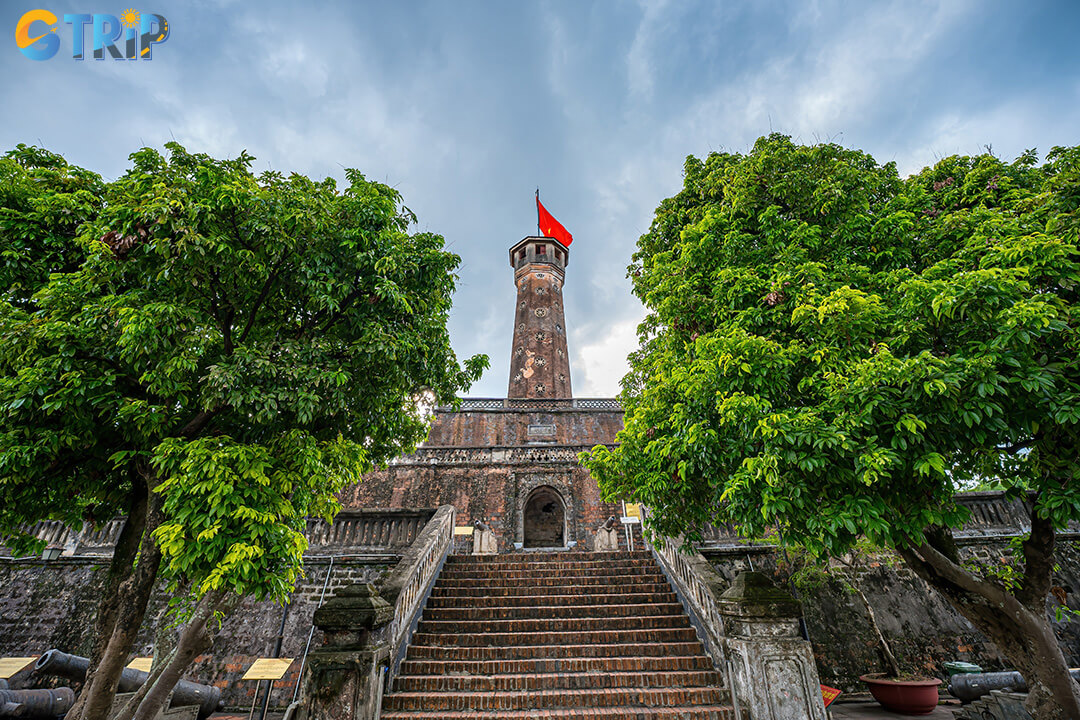
Dress respectfully and wear comfortable shoes to ensure a smooth and mindful visit to the Hanoi Flag Tower
Read more:
A visit to the Hanoi Flag Tower is a journey into the heart of Vietnam's history. Standing where soldiers once stood, gazing out over a city that has risen from the ashes time and again, you gain a deep appreciation for Hanoi's resilience. Blending striking design with sweeping city vistas, the tower offers a one-of-a-kind vantage point over Hanoi. It's a testament to the past and a beacon for the future, a place where history feels alive and palpable. As you plan your Vietnamese adventure, let GTrip - Vietnam Travel Agency guide you to these unforgettable experiences.

